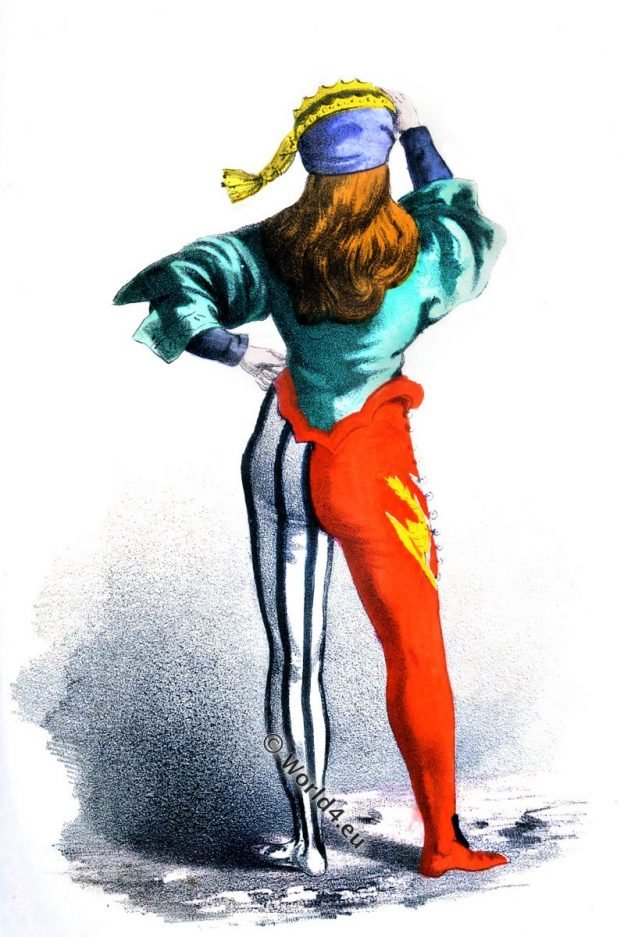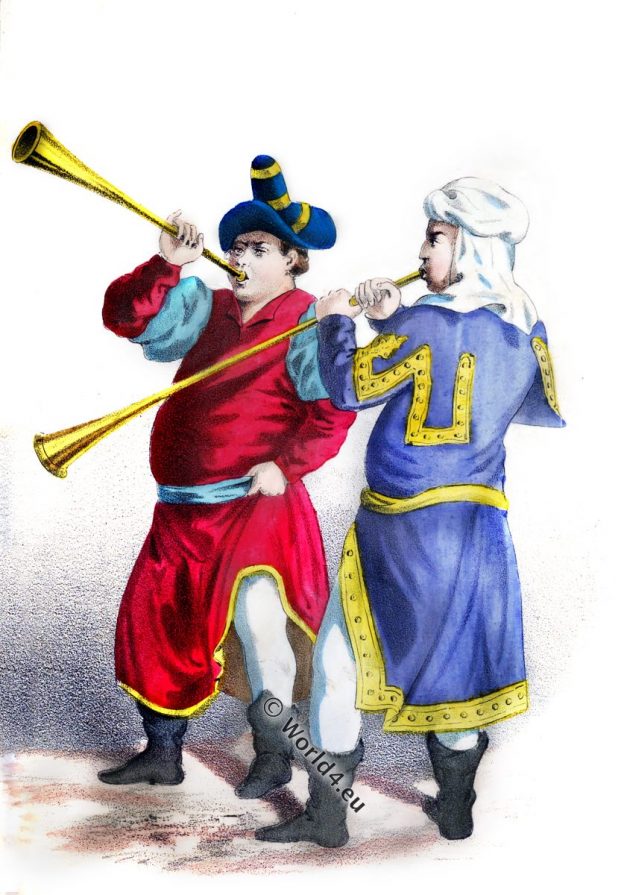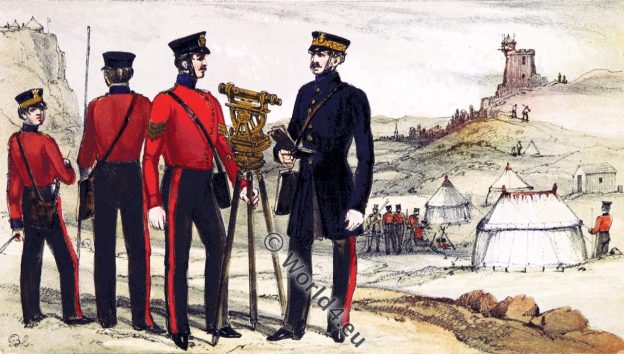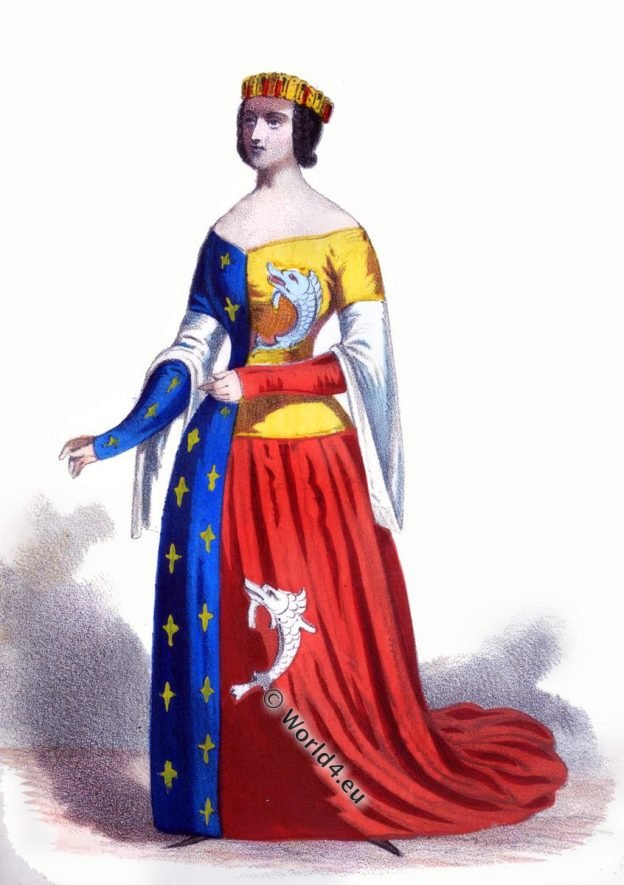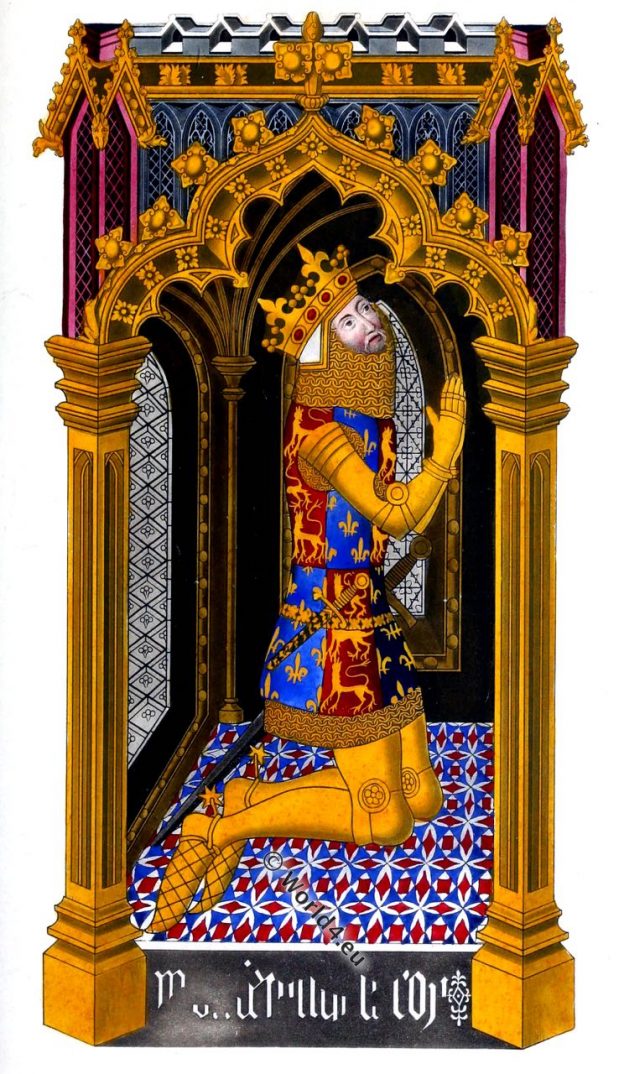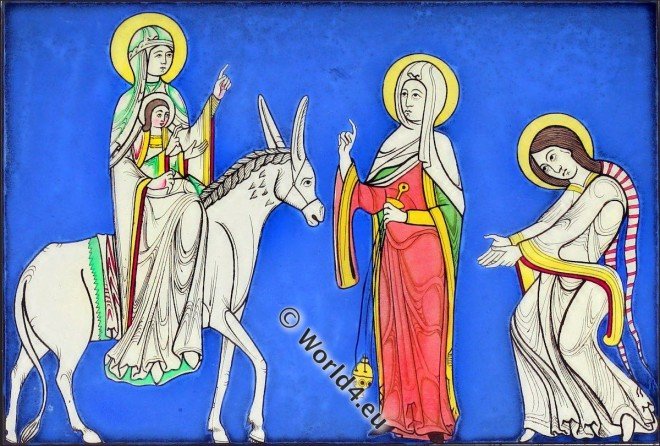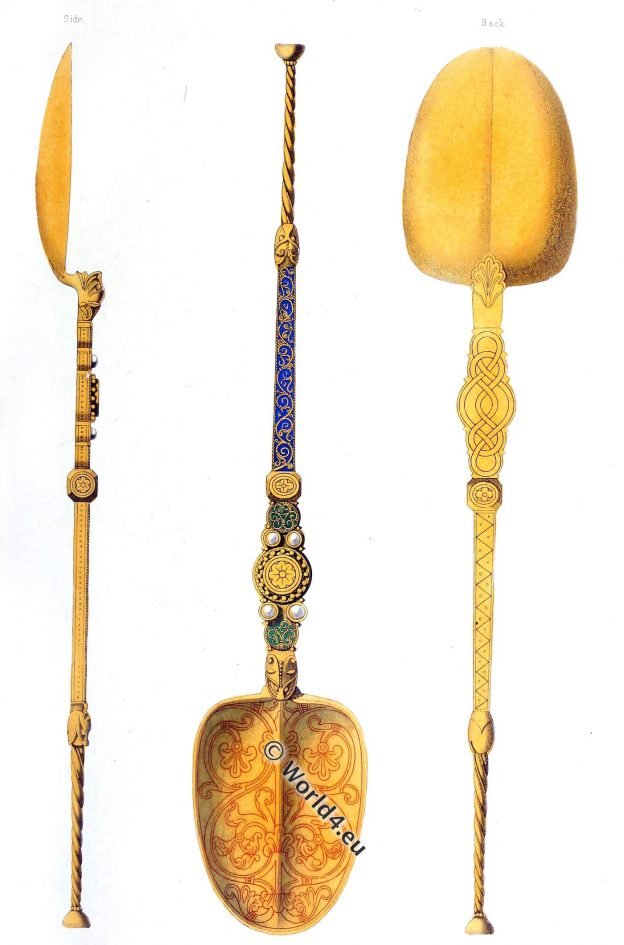The Society of La Calza was an association of young Venetian noblemen and a few strangers of high rank.
Musicians of the time of Edward III. England 14th century.
The plate which we give represents a group of simple musicians of the time of Edward III, and the singularity of their costume proves that a taste for the grotesque in dress had already made sensible progress at this period.
Royal Sappers and Miners. Working Dress 1854.
Royal Sappers and Miners. Working Dress 1854.
Anne Dauphine of Auvergne in armorial robe.
Anna Dauphine d’Auvergne (1358 – 1417) Countess of Forez, Comtesse de Montpensier
EDWARD III, King of England and Wales. Anjou Plantagenet dynasty.
Edward III. from the Anjou Plantagenet dynasty, is considered one of the most important English rulers of the Medieval times.
French lady of rank. 15th century nobility costume.
A noble French lady, is decked the sugar-loaf (hennin) head-dress so commonly adopted during all of the 15th century.
Courtiers of the time of Richard II.
Anjou-Plantagenêt ruling dynasty of medieval England
Geoffrey Chaucer. English writer and poet.
DAN Chaucer, as he is termed by some of our older writers, is the popular representative of the earlier period of English poetry; indeed he may be considered The Poet, par excellence, of the English Middle Ages.
Ladies fashion of the 12th century. Virgin Mary. Anglo-Norman servants.
These figures present interesting examples of the female costume among our ancestors in the first half of the twelfth century. Illuminations of the Cottonian Manuscript Nero C. IV.
Coronation spoon of English monarchs. 12th century.
Coronation spoon of English monarchs.

